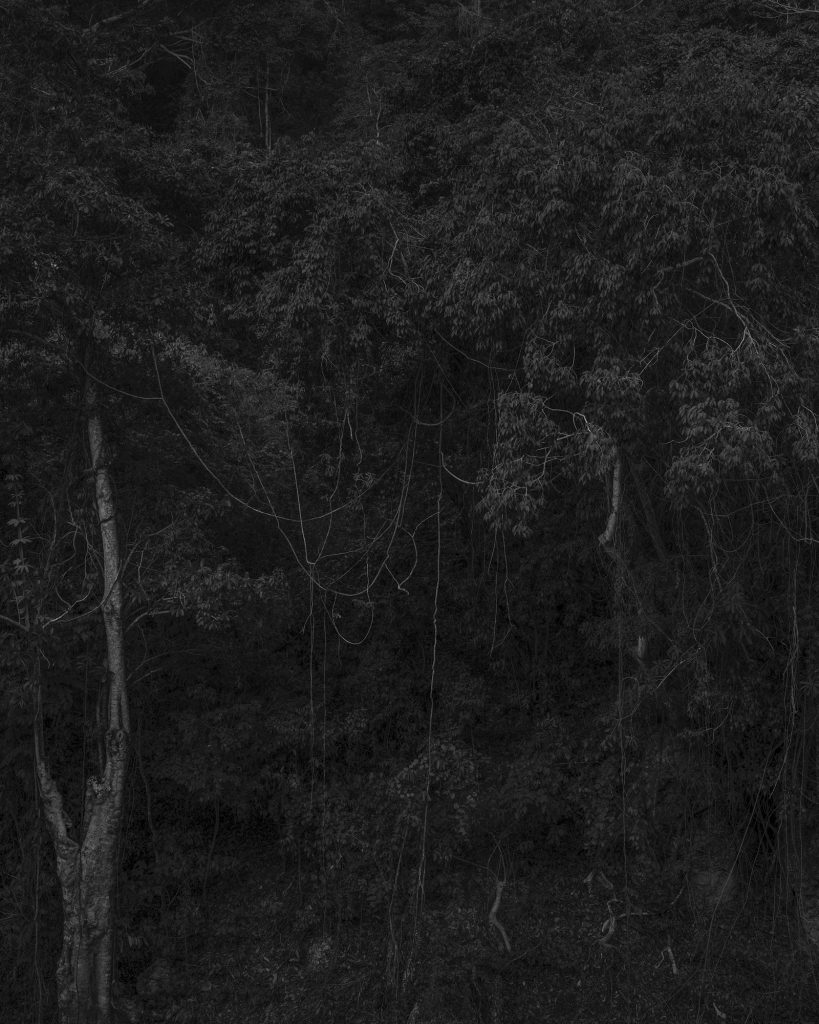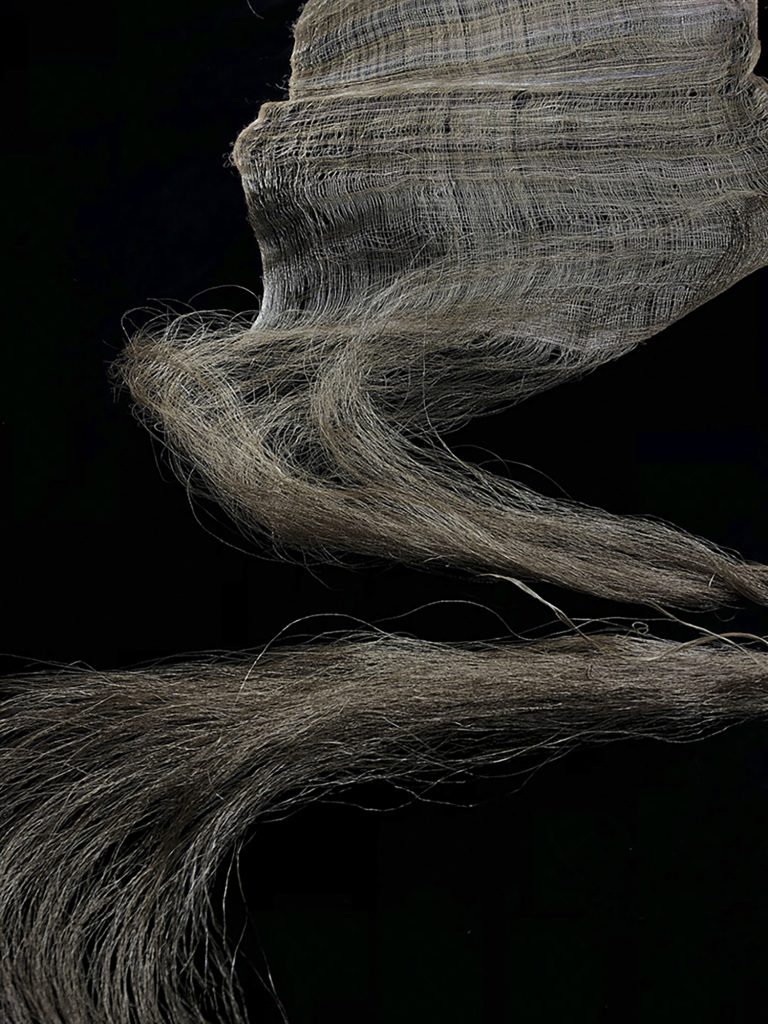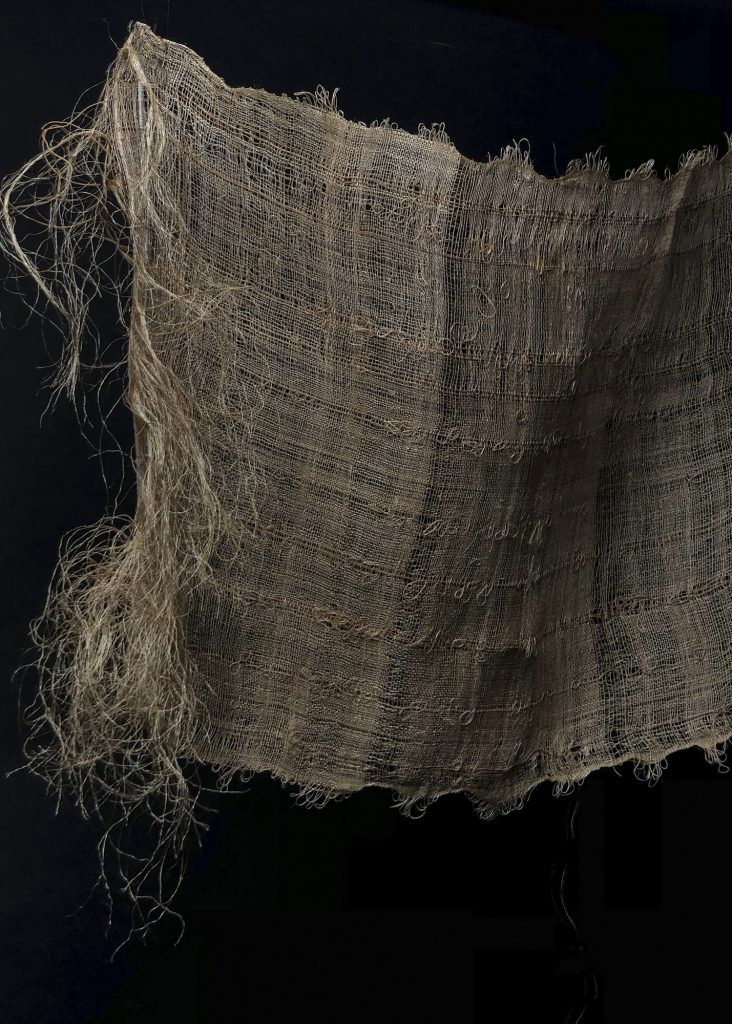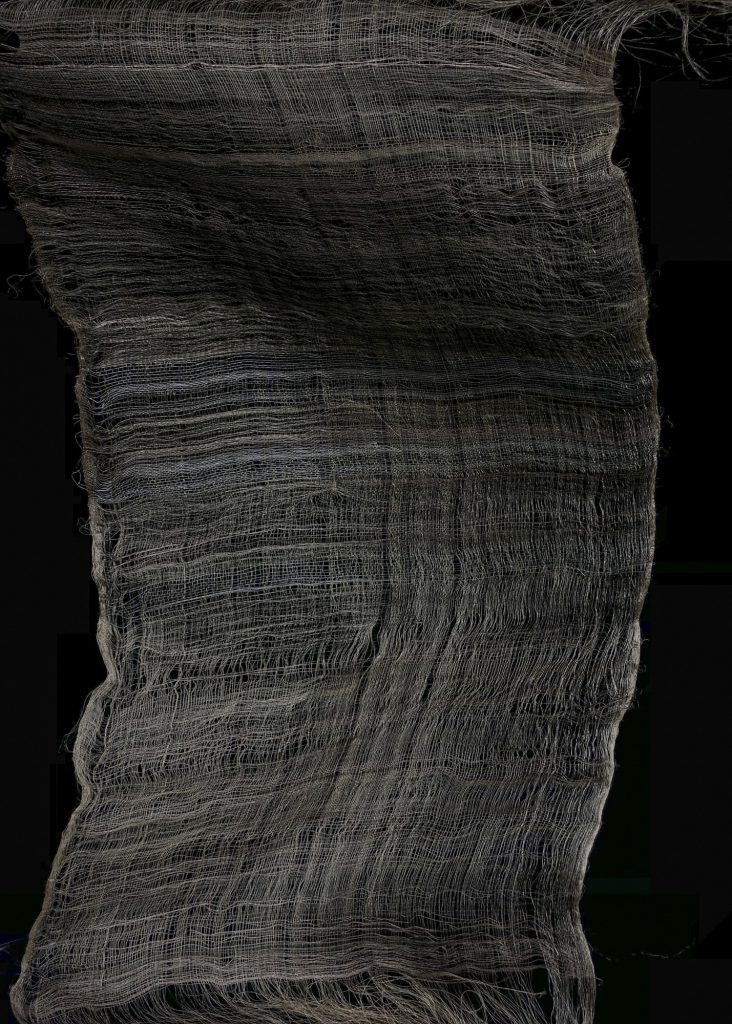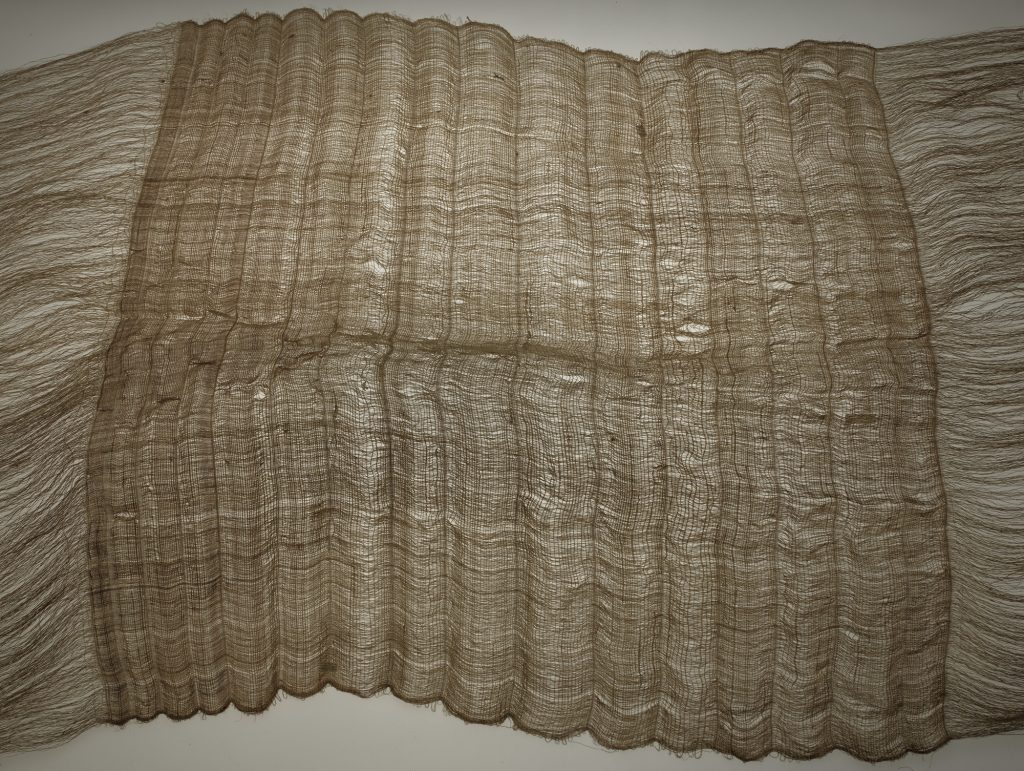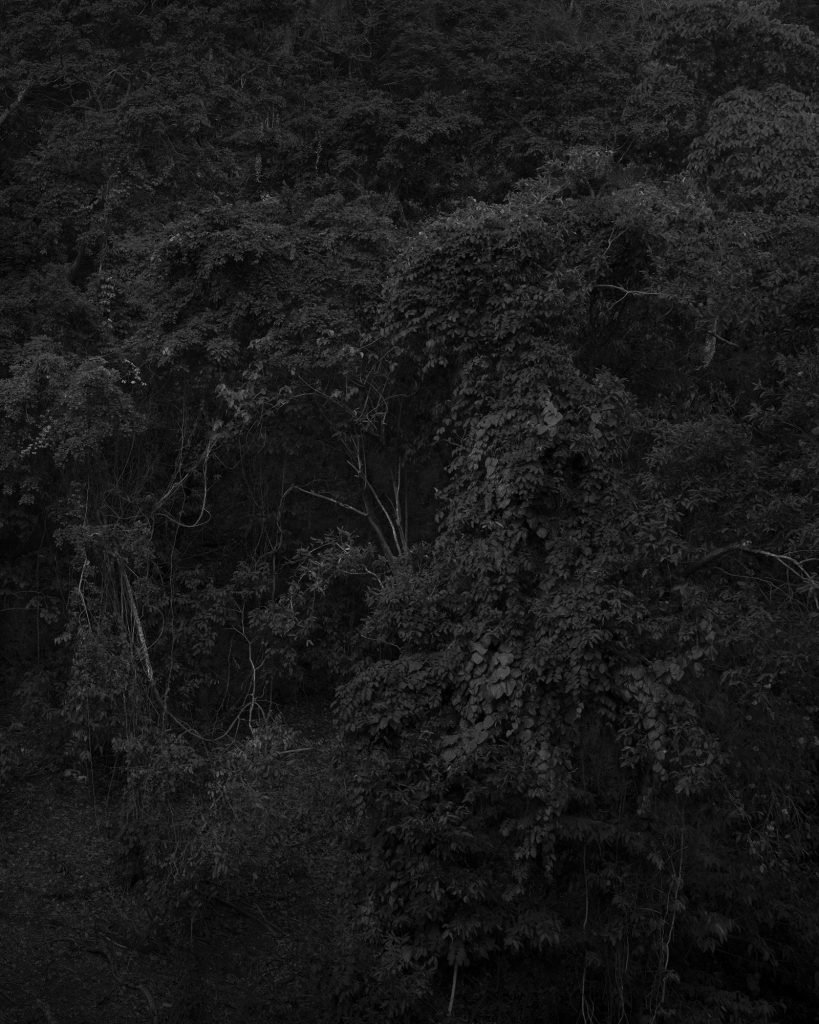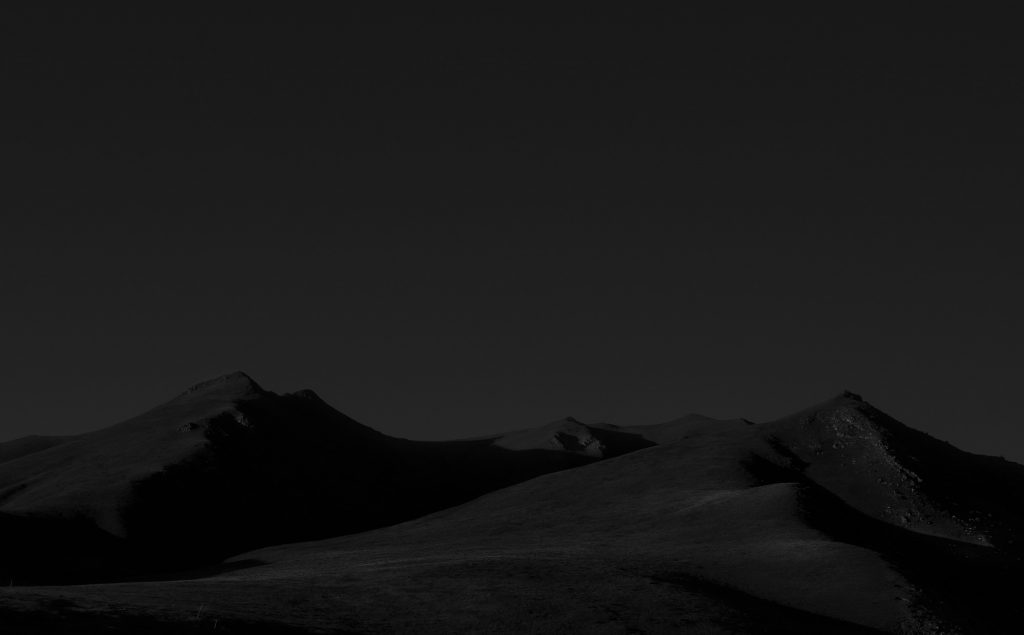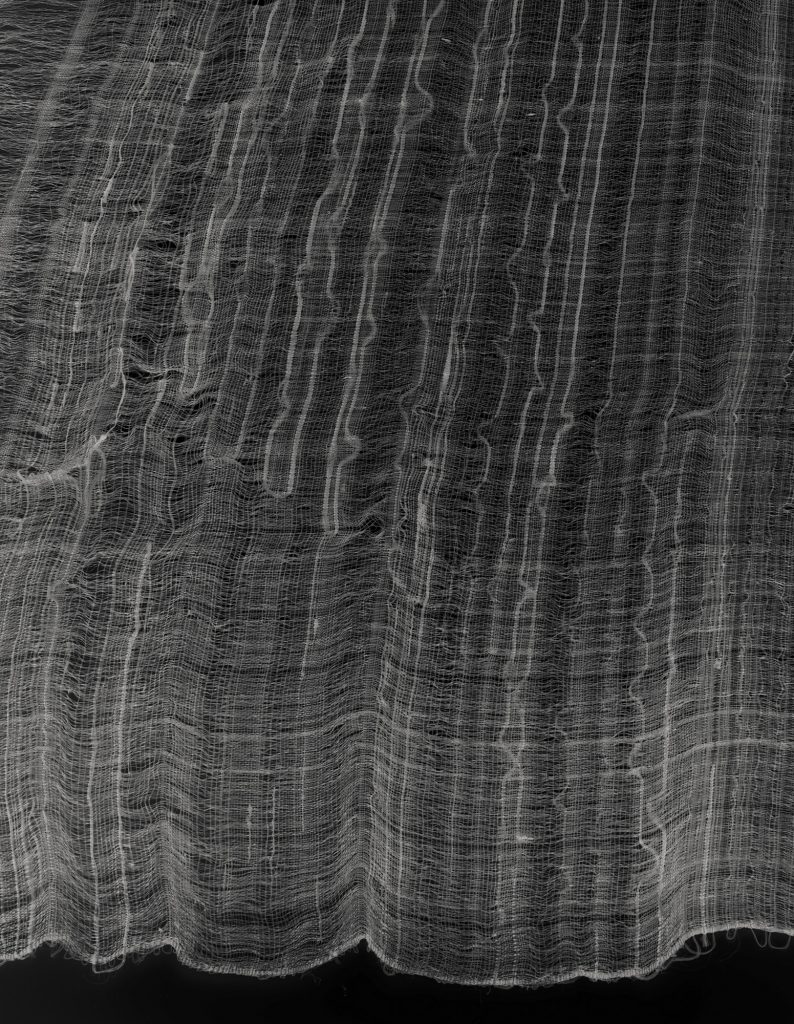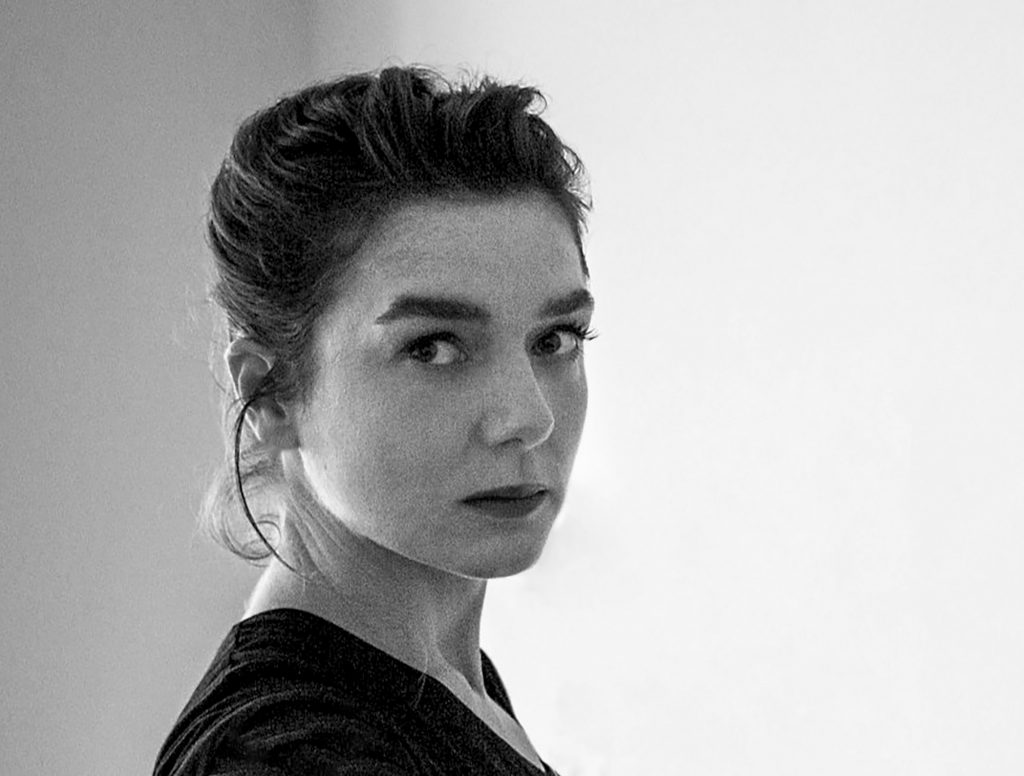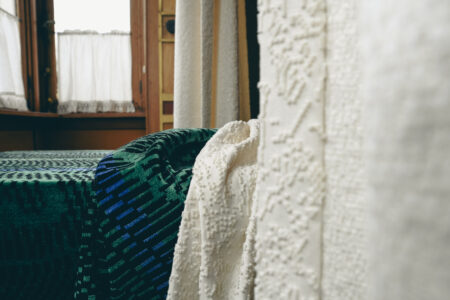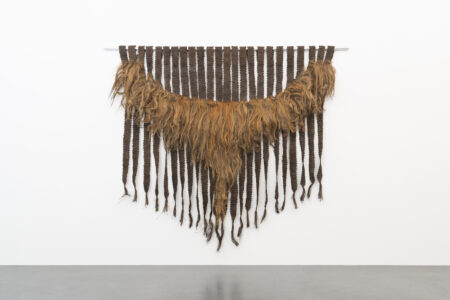
Roosmarijn Pallandt: Metamorphosis of Form
TLmag speaks with Roosmarijn Pallandt, who creates multi-faceted work that echoes and embodies themes of recollection, myth and transformation.
The dark, rich and spiritual landscapes within the multi-faceted work of Roosmarijn Pallandt echo and embody themes of recollection, myth and transformation. TLmag sat down with the artist to learn more about her ever-changing methodologies, the journeys her practice her brought her on and the lessons she’s learnt from the (crafts)people she’s worked with along the way.
TLmag: You have developed a distinct artistic research methodology that is continuously changing. Your work does not limit itself to a 2D surface, as you build accompanying installations, compromising photography, 16 mm film, sound, and create collaborative objects with local weavers around the world. How did you first start out?
Roosmarijn Pallandt (RP): My early practice mostly focused on dance and performance; looking at the different ways we embody memory. In other words, it was mainly focused around the body’s expression and articulation in space and time. Later on, I began to explore the constant ripples of ‘place’ and ’emplacement’, and my methodologies extended themselves. My practice is now in a continual state of metamorphosis of form in relation to space and time.
Today, my fascinations have extended themselves to not only a human-centric approach, but one that takes plants’ interactions with humans as well. The past years I travelled to meet with nomadic communities. As they are people who migrate vast distances through rapidly changing landscapes, they can read changes through pattern and textures and can find ways where the elements determine the exact timing of all things. They find themselves in a space that demands movement, attention and flexibility. Being able to meet and travel with nomadic tribes and indigenous communities that inhabit mountains, deserts, glaciers and dense jungles [in Iran, Tibet, Nepal, Peru, Japan and Mexico amongst other places] has left a profound impression on me and my practice. The shepherds, farmers, weavers, hunters, shamans, and fishermen that I was fortunate to meet, showed me how the (raw) material and the human being are connected and equally important. How there is no hierarchy of values, both domains are one and inseparable.
Having been fortunate to learn about the natural order of things, the most recent turn my practice evolves around the metamorphosis of form. Patterns change by repetition in time and space, so do memory and myth. It is not only how we interact with the natural world, but actually how plants interact with us. I hope to create work that allows you to step into a multi-dimensional and continuous flow of waves, patterns, rhythms, and textures.
TLmag: Like you just said, you’ve immersed yourself in biotopes from deserts to jungles and mountains, in all corners of the world over the last nine years, and worked in collaboration with local craftsmen and people. It feels as though textile, in particular, plays an essential roll in the collaboration process and your practice as a whole. What does working with this material mean to you?
RP: The textiles that I make in collaboration with skilled weavers are made of various types of plant yarns. The tree has an important place in my projects: from root to the tallest tip, trees are the caretakers of life on so many levels. To work with the raw materials from the forest, the tree, feels like I’m working with the direct translation of the inner workings of time and space within the forest and within the weaver who created the fabric.
Additionally, textiles encapsulate the feeling of being in tune with the universe’s (not the human) time. Weaving and dyeing with plants resemble the cycles of life very closely while receiving energy from nature. They all demand (for a certain amount of time) a specific sequence of events; they require alignment. I think textiles form beautiful connections with which human beings can coincide and connect with each other and all living organisms around us.
Ultimately, I find that textiles are direct mediators between the human body and the surrounding environment. One is not merely a translation of the other, but instead, one can be found in the other: the tree behaves the same in the forest as it does in the textile. Both visible and invisible, they are places in which to dream: they refute language because they are made of it.
TLmag: Although your work has this co-collaborative aspect to it, the final result feels quite lonely and isolating – as the landscapes you photograph are often empty and barely ever feature people in them. How do you see this? Does the ‘human’ not need to be a part of the landscape for us to be in a relationship with it?
RP: Even though people seem to be missing in my images, they are present in every detail. The forests, deserts or mountains that I photograph are places loaded with meaning and great importance to the people who brought me there. They are often sacred places where one can travel to the other realm, connect to the spirits of the forests and ancestors and/or areas where freshwater runs. People brought me to these places and made me curious about the daily and spiritual rhythms that align them to that place.
Despite the shared walks and time spent inside together, I always return to these spots by myself after the light has fallen. I only photograph by dusk and dawn, or night time (preferably with a full moon), because that’s when colours turn to shadows, my gaze slows down and, as a result, the way I perceive and orient myself in space completely changes.
To bring this experience of place to the surface and to engage with our collective sense of texture, I use some of the oldest photo techniques, like platinum and carbon printing. Both these processes demand focus and patience in order to create texture and depth in a monochromatic palette. Although it’s a completely different way of working, these techniques somehow also embody a different kind of biological time, just like the textiles.
TLmag: What is an important lesson that you’ve learnt from the communities and environments you’ve visited?
RP: That there is a natural tendency to the way things are, and if we could tune in to the strange logic of turbulence, we can foster a heightened sensitivity for the environment as a whole.
Tlmag: Your latest work is based on research that takes place underwater. Could you tell us a bit more about it?
RP: Water is one of the most mysterious elements on earth. On the one hand, we are primarily comprised of it, and on the other, it is something that cannot be embodied by us. We are both of these things, inextricably and at once. For many years, I have been drawn to the law of ceaseless cycles, and it’s memory and power to transform. Looking into the water crises that our planet currently faces aligning with the natural rhythms is urgently important.
For this specific research project, I mainly work underneath the water’s surface. I use gravitational pulls, waves and patterns to create tactile reference works that may make us more sensitive to the subtle harmonies by which plants interact with people and vice versa. The works will focus on scientific research as well as ancient wisdom and craft.
